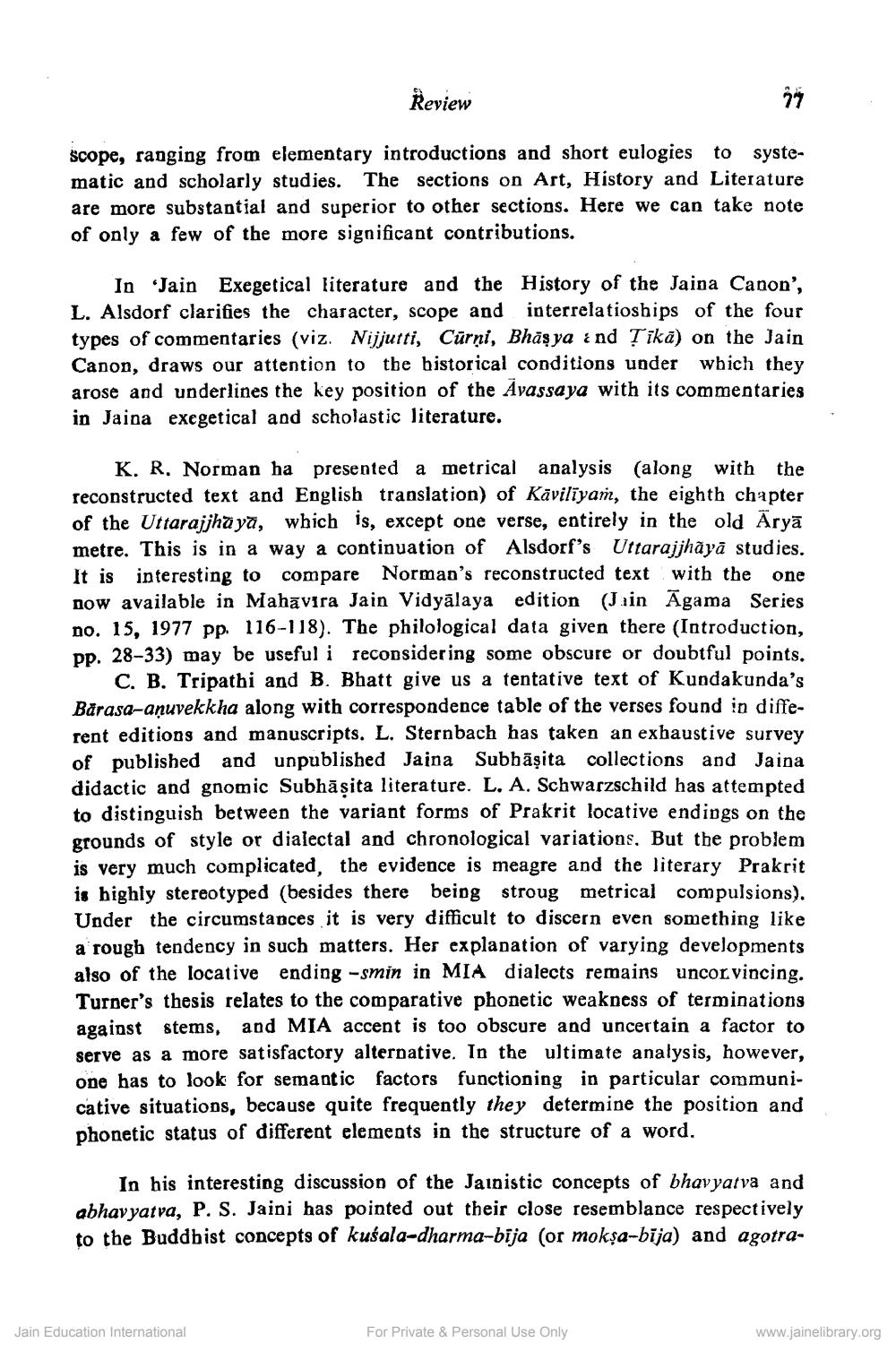________________
Review
scope, ranging from elementary introductions and short eulogies to systematic and scholarly studies. The sections on Art, History and Literature are more substantial and superior to other sections. Here we can take note of only a few of the more significant contributions.
In Jain Exegetical literature and the History of the Jaina Canon', L. Alsdorf clarifies the character, scope and interrelatioships of the four types of commentaries (viz. Nijjutti, Cūrņi, Bhäşya <nd Ţikā) on the Jain Canon, draws our attention to the historical conditions under which they arose and underlines the key position of the Avassaya with its commentaries in Jaina exegetical and scholastic literature.
K. R. Norman ha presented a metrical analysis (along with the reconstructed text and English translation) of Kävilīyam, the eighth chapter of the Uttarajjhāyā, which is, except one verse, entirely in the old Aryā metre. This is in a way a continuation of Alsdorf's Uttarajjhāyā studies. It is interesting to compare Norman's reconstructed text with the one now available in Mahavira Jain Vidyālaya edition (Jain Agama Series no. 15, 1977 pp. 116-118). The philological data given there (Introduction, pp. 28-33) may be useful i reconsidering some obscure or doubtful points.
C. B. Tripathi and B. Bhatt give us a tentative text of Kundakunda's Barasa-anuvekkha along with correspondence table of the verses found in different editions and manuscripts. L. Sternbach has taken an exhaustive survey of published and unpublished Jajna Subhāşita collections and Jaina didactic and gnomic Subhāşita literature. L. A. Schwarzschild has attempted to distinguish between the variant forms of Prakrit locative endings on the grounds of style or dialectal and chronological variations. But the problem is very much complicated, the evidence is meagre and the literary Prakrit is highly stereotyped (besides there being stroug metrical compulsions). Under the circumstances it is very difficult to discern even something like a rough tendency in such matters. Her explanation of varying developments also of the locative ending -smin in MIA dialects remains uncorvincing. Turner's thesis relates to the comparative phonetic weakness of terminations against stems, and MIA accent is too obscure and uncertain a factor to serve as a more satisfactory alternative. In the ultimate analysis, however, one has to look for semantic factors functioning in particular communicative situations, because quite frequently they determine the position and phonetic status of different elements in the structure of a word.
In his interesting discussion of the Jainistic concepts of bhavyarva and abhavyatva, P. S. Jaini has pointed out their close resemblance respectively to the Buddhist concepts of kusala-dharma-bija (or mokşa--bija) and agotra.
Jain Education International
For Private & Personal Use Only
www.jainelibrary.org




